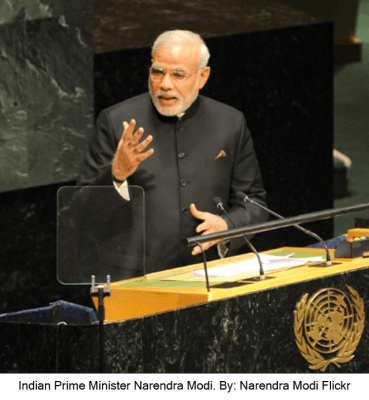By Siddharth Singh
In last seven months after coming to power with the strongest mandate ever, the new government under the dynamic leadership of Prime Minister Narendra Modi has raised unprecedented expectations that the new government will finally unburden the country’s foreign policy from the ideological fixation of the Nehruvian era and the diplomats and thinkers in South Block will reorient their approach to meet the demands of new geopolitical realities. Modi’s massive election victory has potentially freed his foreign policy from being held hostage by domestic politics. As Prime Minister Modi always mentions in his speeches that 21st century belongs to Asia and so for this dream to translate into reality, India must assume a larger role in the shift of global power towards Asia. This can only be achieved on the basis of domestic strength as well as projection of “Brand India” across the world. Given the enormity of the economic challenges, the new government has emphasized especially on trade and commercial relations in their foreign policy approach. Government has prioritized economic diplomacy to facilitate India’s economic revival. When it comes to dealing with big powers, till now geo-economics has guided Prime Minister Modi’s foreign policy. Prime Minister Modi is a pioneer of trade and economic diplomacy with a proven track record in Gujarat because as Chief Minister of Gujarat, he made several trips to China, Japan, and South Korea, cultivating a personal rapport with leaders like Japanese Prime Minister Shinzo Abe. Prime Minister Modi is focusing on trade routes to deepen the relations with big powers that matter to India’s economic revival and geopolitical rise. For instance, geo-economics is playing a vital role in driving Sino-Indian relations. Modi is well aware that China needs the Indian market while India also needs Chinese investments. India’s growing relationship with Japan under the NAMO-ABE axis has provided a new impetus to this bilateral relation. Japanese firms that are facing growing hostility in China, increasingly see India as a better destination for investments. By inviting Barack Obama as a chief guest on Republic Day of India, Modi is trying to strengthen India’s relationship with the United States. The Indo-U.S. relationship has suffered in recent years from stagnation on trade negotiations, disputes over intellectual property in W.T.O. etc. But despite all these things, when Modi visited United States of America, from then a new warmth has been noticed in IndoU.S. relation Prime Minister Modi has launched a Make in India programme to make India a manufacturing hub as well as to create more and more jobs for the youth and he as well as the Ministry of External Affairs, Ministry of Defence, Ministry of Commerce and Trade is successfully pursuing his agenda of “Make in India” in all global interactions. Prime Minister Modi has set an ambitious target of bringing India’s rank under 50 from 142 in ease of doing business in India. In short, Modi government’s priority is to bridge the gap between the country’s development goals and its foreign policy. In conclusion, the new government has raised the expectations on India’s foreign policy front. Every move the government makes is being keenly watched, and there are indications that Modi’s foreign policy will be significantly different from that of his immediate predecessors. The most significant change will be the gradual reorientation of India’s foreign policy to support the development of India or in other words to serve the national interest in letter and spirit.
(Siddharth Singh is with the School of International Studies (SIS), Jawaharlal Nehru University, New Delhi.)
(The views expressed are the author's own and do not necessarily reflect the position of the organisation)

